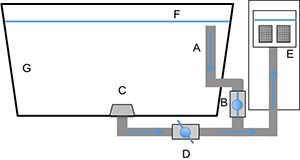Abstract
As aquaculture production techniques streamline, interest in captive breeding for marine fish species increases. The food, ornamental, and bait industries all benefit from expanding the development of aquaculture techniques for desirable marine fish species. A significant limitation in developing aquaculture protocols for marine fish species is an adequate understanding of viable egg production and larval development. The first step in that process is to efficiently collect fertilized embryos, usually referred to as eggs, for examination and further development. This 6-page fact sheet written by Cortney Ohs, John Marcellus, Eric Cassiano, and Jason Broach and published by the UF/IFAS Program in Fisheries and Aquatic Sciences of the School of Forest Resources and Conservation includes directions for construction and operation of two types of pelagic egg collectors: pre-filter and floating airlift.
http://edis.ifas.ufl.edu/fa211
References
Cassiano, E. J., M. A. DiMaggio, C. L. Ohs, and J. Marcellus. 2015. FA188. Using airlifts to collect and concentrate copepod nauplii. Gainesville: University of Florida Institute of Food and Agricultural Sciences. http://edis.ifas.ufl.edu/fa188
Wittenrich, M. L. 2007. The complete illustrated breeders guide to marine aquarium fishes. TFH Publications, Neptune, NJ.
Unless otherwise specified, articles published in the EDIS journal after January 1, 2024 are licensed under a Creative Commons Attribution-NonCommercial-NoDerivs 4.0 International (CC BY-NC-ND 4.0) license.

